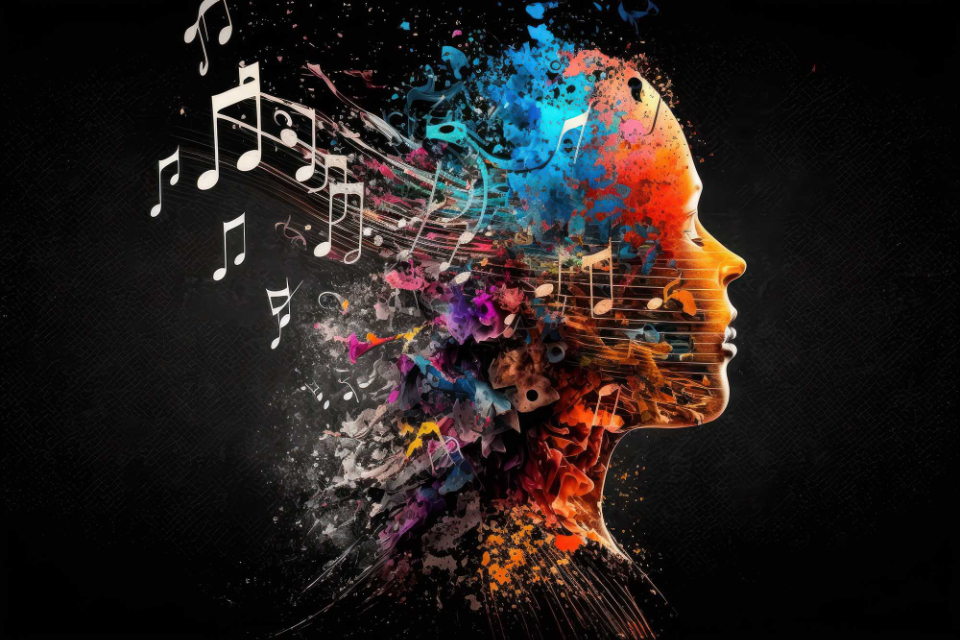Brain-music connection: We don’t just hear music, we become it
New research integrates findings from neuroscience, music, and psychology to support Neural Resonance Theory (NRT), which suggests musical experiences arise from natural oscillations in the brain that synchronise with rhythm, melody, and harmony. Rather than merely processing musical input, our brains physically resonate with music, explaining its profound emotional and physical effects.
The embodied musical experience
An international study co-authored by McGill University psychologist Caroline Palmer reveals that our experience of music involves much more than just auditory processing. The research, published in Nature Reviews Neuroscience, brings together a comprehensive body of evidence supporting Neural Resonance Theory (NRT), which proposes that musical experiences emerge from the physical resonance of brain oscillations with musical elements.
“This theory suggests that music is powerful not just because we hear it, but because our brains and bodies become it,” said Palmer, Professor in the Department of Psychology at McGill and Director of the Sequence Production Lab. “That has big implications for therapy, education and technology.”
The study, led by Edward Large from the University of Connecticut, marks the first time the entire NRT framework has been published in a single paper. It provides a unifying theory for how our neural mechanisms engage with music across multiple timescales, from the slower rhythms of beats and metres to the faster oscillations of pitch and tone.
Resonance rather than prediction
Central to NRT is the concept that musical structures like pulse and harmony reflect stable resonant patterns in the brain that are shared across individuals regardless of their musical background. The theory challenges alternative models that explain musical processing primarily through learned expectations or prediction.
According to the researchers, how we hear and produce music can be explained by fundamental dynamical principles of brain mechanisms that apply throughout the auditory pathway – from the ear to the spinal cord and limb movements.
“Building on principles such as resonance, stability, attunement and strong anticipation, we propose that people anticipate musical events not through predictive neural models, but because brain-body dynamics physically embody musical structure,” the authors write in the journal paper.
Unifying rhythmic and tonal perception
The research explains how similar neural mechanisms operate across vastly different timescales. At slower timescales, brain oscillations synchronise with musical rhythms, creating our perception of beat and metre. At faster timescales, similar principles explain how we process pitch, harmony, and tonality.
In both cases, the most stable patterns correspond to simple mathematical relationships that are found across musical cultures worldwide – explaining why certain musical features appear universally despite cultural differences.
“Statistically universal structures may have arisen in music because they correspond to stable states of complex, pattern-forming dynamical systems,” the authors note.
Therapeutic and educational applications
The researchers highlight several potential applications of NRT, including:
- New therapeutic approaches for conditions such as stroke, Parkinson’s disease, and depression
- Emotionally intelligent AI that can respond to or generate music more like humans
- Innovative learning technologies to support rhythm and pitch education
- Cross-cultural insights into why music connects people worldwide
The integration of these neurodynamic principles provides a powerful framework for understanding musical cognition that accounts for both universal features and cultural variations.
“This analysis of empirical findings from the perspective of neurodynamic principles sheds new light on the neuroscience of music and what makes music powerful,” the authors conclude.
The findings suggest that music’s emotional power stems not just from learned associations but from the physical embodiment of dynamic patterns in our neural systems – we don’t just hear music, we literally resonate with it.
Reference:
Harding, E. E., Kim, J. C., Demos, A. P., et. al. (2025). Musical neurodynamics. Nature Reviews Neuroscience, 26, 293–307. https://doi.org/10.1038/s41583-025-00915-4


